By Teri Shore
When I took the California Naturalist course with the Sonoma Ecology Center (SEC) in March 2020, it was the early days of the COVID epidemic and shutdown. All in-person meetings and field trips were suddenly canceled. While we were all a bit shocked, SEC Education Program Manager and course leader, Tony Passantino, gave us the option to continue on Zoom, that new app most of us had never used. Tony told us we could complete the field trips if we wanted sometime in the future, post-COVID.,
So we sat alone at our sit spots close to home and submitted homework via Dropbox, another new app to learn. We shared our nature journals and capstone projects virtually to achieve our official certifications as California Naturalists. My final project was a public presentation on the fabulous and funny pileated woodpecker that flies and drills in our local forests.
Now five years later, I finally joined a field trip with the current Cal Naturalist class of 2025 on a watershed and geology excursion to Sugarloaf Ridge State Park. SEC’s Research Project Manager, Wendy Hayes, shared expertise on how water moves in the landscape. Scott Lawyer, Sugarloaf Ridge State Park’s Head of Maintenance, delved into the rocks and faults that shape the land.
The UC California Naturalist course is offered every year through the Sonoma Ecology Center, as well as at other locations. Read more at: https://sonomaecologycenter.org/calnat/ https://ucanr.edu/statewide-program/uc-environmental-stewards
The course consists of eight weekly lectures from a roster of local experts. They guide participants through a comprehensive syllabus that covers topics such as field observation, watershed ecology and environmental challenges, with the course culminating in each student presenting a Capstone Project and, finally, certification as a California Naturalist.
The current class consisted of about 25 people from Sonoma Valley and around the Bay Area, of multiple generations, including students, professionals, and nature enthusiasts like me.
Highlights from the Field Trip
To get us thinking about watersheds, Wendy provided this interpretation:
“Think of a brook like your fingers on your hands, gathered in a stream in your palm, traveling down the river of your arm to the body and on down to your feet which are the delta where the water spreads out again.”
When we stopped at Bear Creek, that feeds into Sonoma Creek near the Goodspeed Trailhead, she prompted us to consider why the smaller creek is so attractive to the chinook salmon that swam over 30 miles to spawn here.
“Bear Creek has shade, water stays cool, there are pools for fish and amphibians to rest in,” Wendy explained. “Water is the ultimate sculptor.”
From there, we walked up the road to take a look at rock formations. We stopped next to a swath of exposed hillside from a road cut and recent landslide. Here Scott pointed out a wall of red, iron-rich volcanic ash side-by-side with an expanse of white rock formed by totally different geologic forces.
“Road cuts are a geologist’s friend,” said Scott, as they allow a peek into what’s underneath the topsoil. An ancient landslide probably caused these different layers of rock to converge.
Further upstream we learned that, during the recent rains, Ponygate Creek poured dark silty waters from erosion and vegetation into the clearer water of Sonoma Creek below the falls. Why the difference? The smaller stream rushes through tangled vegetation and trees down from historic landslides, while Sonoma Creek flows along a fault where the way is rockier.
At this same confluence, Scott pointed out how the layers of rock on the opposite bank tilted vertically from uplift, but then suddenly went horizontal further upstream. Why? A fault in the hillside!
Along the way we also witnessed how the creeks and tributaries get scoured by rushing water and rocks get shifted by size as you head downstream with the biggest rocks higher up and sand and silt deposited lower down as the water slows. There is always so much to learn.
While it is too late to join this year’s class of Cal Naturalists, keep an eye out for sign ups next year.
(Thanks to my friend and Cal Naturalist Class of 2025 participant Nancy Evers Kirwan for sharing her notes from the day.)

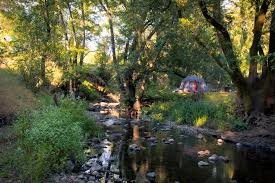
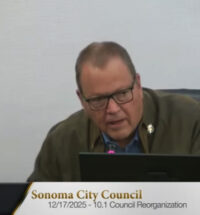

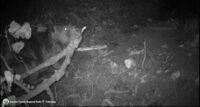
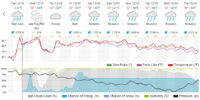

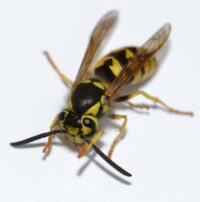
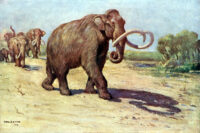
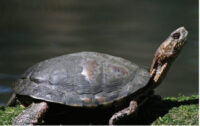
We are so Grateful that Sonoma has held itself for
Pro-healthy Green environs..
As a Pro-created Preborn Sonoma Lifetime Sonoman,
I have maintained 3 Large Sonoma Parcel.
Every parcel is FOREVER GREEN!
Sonoma shares the clean AIR & easy quality food
For one & all.
Naomi Konkoff Radtke
SONOMA